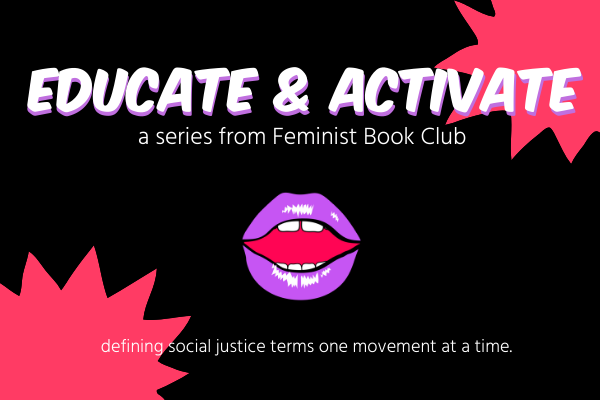Feminist Book Club blog contributors are working together to create posts as an “Educate & Activate” series. We will define a term or movement, provide historical context, and give you additional resources to learn more. We believe that an educated populace can be better activists, accomplices and co-conspirators. It is important to note that these are meant to be brief descriptions and not inclusive or exhaustive of all resources. We urge you to continue being curious, and continue learning more.
DEFINITION
Gentrification takes place when the ‘character’ (i.e. racial makeup or culture) of a neighborhood shifts due to affluent outsiders swooping in to renovate, create new businesses, and generally raise the cost of living there, effectively displacing the current residents from their homes. This almost always comes in the form of wealthy white people gentrifying neighborhoods of color for their financial benefit, much to the detriment of many Black, Indigenous, and people of color (BIPOC) who are, in turn, forced to move to more affordable housing.
Over the years, the term gentrification has come to be more widely used in the United States. While there is a specific definition for the word, its true meaning and impact is multifaceted and affects people differently, especially people of specific socioeconomic statuses and backgrounds. For the purposes of this writing, the focus is on the way gentrification affects communities of color.
FIRST USAGE
The term was coined in 1964 by Ruth Glass, a German-British sociologist and city planner, who found it the best way to describe what was occurring in then-1960’s working-class London neighborhoods at the time. She wrote: “One by one, many of the working class quarters have been invaded by the middle class – upper and lower … Once this process of ‘gentrification’ starts in a district it goes on rapidly until all or most of the working class occupiers are displaced and the whole social character of the district is changed.”
HISTORICAL CONTEXT
Historically, underlying systemic issues made conditions possible for gentrification to take place, and once it did, it negatively impacted communities of color. From the 1930’s to the 1960’s, the U.S. government and lenders engaged in “redlining,” which is the discriminatory practice of actively withholding financial opportunities from BIPOC and communities of color. Areas largely populated by BIPOC were deemed as “risky,” so investors avoided the area, and BIPOC were not given loans to renovate their homes or buy any new property.
The foreclosure crisis of the late 2000’s disproportionately affected BIPOC families more than it did white families, also making these spaces more at risk of becoming gentrified.
One can tell this process is taking place when real estate investors “flip” houses more and more often in certain areas, or when landlords raise the rent or change their income requirements to bring in tenants who earn more. The use of years-empty-land for commercial use in low income communities is another example. Imagine two luxury car dealerships opening up mere miles apart in a place where many residents cannot afford such a vehicle. This is what gentrification looks like.
Many long-term residents of gentrified neighborhoods experience displacement; they have no choice but to seek a more affordable place to live. However, those who are financially able to remain in their home often experience cultural displacement, in which they may feel out-of-place or uncomfortable adapting to sudden changes in their once-familiar home. This might, in turn, become a factor that pushes folks to leave.
For those who do stay, and for those newly moved-in, gentrification can be beneficial in that new opportunities are created; services and jobs become accessible to communities that were not previously available. While this is beneficial for some, gentrification has led to increased police presence in newly-developing areas, an increase that has been proven again and again to be harmful to BIPOC, particularly Black communities.
In recent media, gentrification has been explored more and more as a topic of horror. In the newly released Netflix film Vampires Vs. the Bronx, a young boy and his friends fight to suppress the efforts of a real estate company that is buying up the local homes and businesses in their neighborhood, and they end up finding something more sinister at play. Alyssa Cole’s 2020 thriller novel When No One is Watching also touches on this issue through the eyes of a main character contending with constant changes in her neighborhood. In each of these instances, gentrification is characterized as a villainous, looming force that our Black heroes must fight in order to save their community. People have praised these works for their quality of entertainment, but it is safe to say that, vampires aside, the cultural commentary is spot-on and terrifyingly real.
Gentrification is a feminist issue because, as author Mikki Kendall puts it, feminism “is the work that you do for your community, for yourself, and for your family. It’s less about the academic end, or about becoming a CEO, and more about survival and sustainability for the long-term—for your community and yourself.”
RESOURCES FOR FURTHER EDUCATION

